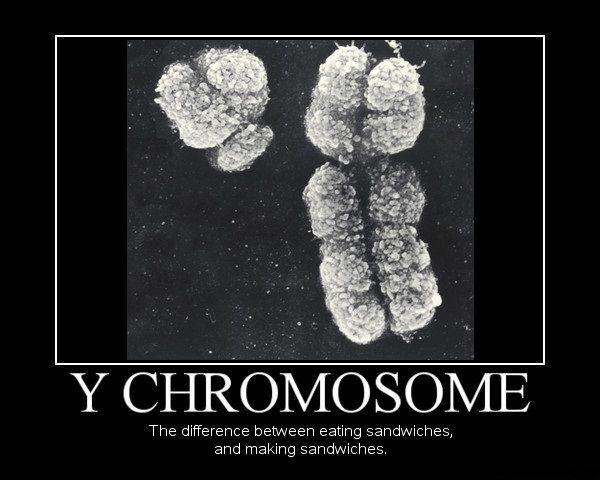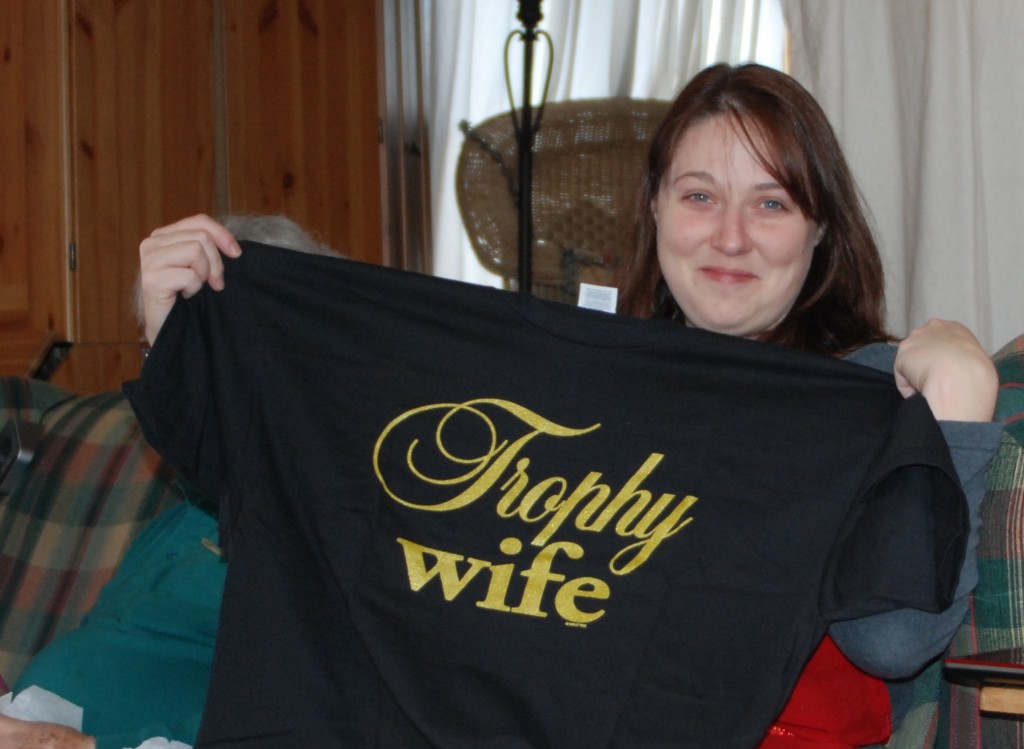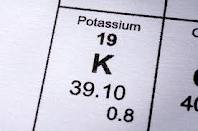Figures of speech part 5
I’m reading The Journey of Man by Spencer Wells, and I ran into a nice example of allusion. An allusion is when the writer refers to something that’s not in the current context. It presumes some outside knowledge on the part of the reader. Chapter 3, on page 50, starts with a famous quote from Gloria Steinem, which, by the way is a simile.
A woman without a man is like a fish without a bicyle.
This section of the book describes features of mitochondrial DNA, transmitted through the female line, and stretches of DNA on the Y chromosome, transmitted only through males. They produce independent histories of the human genome, so they can be used to corroborate one another. Anyway, read on until you reach page 71. About the middle of the page you run into this passage.
It is literally a ‘journey of man’, but it is the best tool we have for inferring the details of the trip. It is obviously important to examine the female lineage to see if it follows the same pattern – to make sure the fish stays with the bicycle, so to speak – but the Y-chromosome does provide us with the cleanest distillation of human migrational history.
—A reference to something either in well-known feminist literature or a quote 20 pages earlier in the book, take your pick.
Gloria must know a lot of fish who like bicycles.
Subscribe to this blog's RSS feed
Birthday poem
Today is my dear sweet wife’s birthday. This being a writing site, I suppose I’ll write a poem for her.
I’ve known her for a decade and a half
I think that she’s a witch because I know
She’s just as gorgeous now as when we met
And still my heart is captive to her charmI can’t escape; I haven’t even tried
The very thought of looking somewhere else
Repels me like a fox repels a hare
I really want to feel her close at hand
Two quatrains of blank iambic pentameter. Much too stiff. I need something a little more casual and friendly.
My wife is cute
She’s such a hoot
She likes to snuggle, too
She’s such a dear
’cause when she’s near,
She also likes to–
Nah, too casual. Gotta be something I can recite in public. Maybe a ballad form. Quatrains of iambic tetrameter, AABB rhyme scheme.
I like my wife, she’s nice to me
She feeds me supper faithfully
Her birthday’s coming soon I hear
What gift to get my wife so dear?I know! I’ll take her out to eat
I think she’ll think that that’s a treat
I’ll tell her “Get what’er you wish
And you won’t have to wash a dish!”
Better, but not very lovey-dovey. Can I put together something a little more romantic?
You make me think of flowers, dear.
They’re always lovely every year.
You’re like the stars, those gems of light,
You light my life and make it bright.
You’re like a book I like to read—
I never know where the plot will lead.
You make me happy as a clam,
I married you, and glad I am!
Think that’ll do? Just in case, wish her a happy birthday in the comments, okay?
And here’s a picture of her:
Figures of speech part 4
Here’s a nice passage from the preface to The Journey of Man by Spencer Wells.
Our DNA carries, hidden in its string of four simple letters, a historical document stretching back to the origin of life and the first self-replicating molecules, through our amoebic ancestors, and down to the present day.
Here we have some nice examples of figurative language in what amounts to a scientific document. It’s in the preface, so the figures are appropriate, I think. Let’s take them out, and you’ll see what I mean.
Human DNA contains, in its string of billions of copies of four nucleotides, information that describes life from the time of its origin until now.
Not nearly as interesting, is it?
The original sentence contains examples of personification (ancestors), pleonasm (“present day” instead of “now”), metonymy (“letters” instead of “nucleotides”), synecdoche (“four” instead of “string of billions of copies of four”), hysteron-proteron (putting “self-replicating molecules” ahead of “the origin of life”), metaphor (“document” instead of “information”), and anabasis (adding “amoebic ancestors” between “molecules” and “present day.”) There; I think I got them all. You might include catachresis, or incongruity, since we generally consider the movement from self-replicating chemicals to humans as moving upward, but he describes the passage of time as downward (“down to the present…”). He also starts describing time as going back to the origin, and ends by coming down to the present. Adding physical directions to the passage of time is a figure of speech, too, but whatcha gonna do?
personification: attributing human characteristics to something
pleonasm: redundancy
metonymy: substituting one noun for another
synecdoche: saying a part of something, but meaning the whole thing
hysteron-proteron: putting the second thing first
metaphor: giving something another name
anabasis: going slowly upward
catachresis: being self-contradictory
Your reaction is probably surprise. To which I say, figures of speech are pretty common, aren’t they?
If you prefer, here’s a simpler approach:
Another who preaches my message
I know of many kindred spirits out there who promulgate good writing; I just ran into a new one. New to me, anyway. It’s in the form of an article on a site called Website Magazine. They are a fairly classy trade rag for people in the Internet Marking business, and wannabes. I get their free subscription, which includes a glossy every quarter, and the articles are generally pretty good.
The article is titled Grammatical Gaffes are the Worstest, and I recommend giving it a read.
It’s more or less my kind of article. I even commented on it. It ends with a challenge to find all the mistakes in the article, a fun exercise if you’re a grammar curmudgeon/nazi/emperor. Or wannabe.
Here’s an essentially unrelated picture, but I wanted to include something to look at besides my deathless prose.
Verbing nouns
In English we have a habit of taking apparent prefixes and suffixes off a word to make a new word. It’s called back formation. So we have an invite when we used to have an invitation. Grammarians tend to disfavor this, but English is littered with these forms, so we curmudgeons may as well learn to live with them.
Another bad habit that is practiced quite a lot is to make a verb out of a noun. For example, “text.” Is it a noun or a verb? Remember the song, “Matchmaker Matchmaker, catch me a catch”? I remember someone once criticizing this habit when we have perfectly good ways to say something already. They were writing about using “office” as a verb, as in “Where do you office?”
I am slightly embarrassed to confess that I joined this club today with my own neologism. First a little context. A geek joke is running around in the texting community, in which instead of (ahem) texting “K” (short for “okay”), the person texts “potassium.” Get it? (Okay, for my non-chemist non-geek readers, the chemical symbol for the element potassium is K. Hence the joke.)
It probably won’t last long because texters are notoriously frugal with their keystrokes, but I like the joke, and I used it on someone the other day. Then I texted a friend who was in on the joke that I had potassiumed someone.
Mea culpa.





